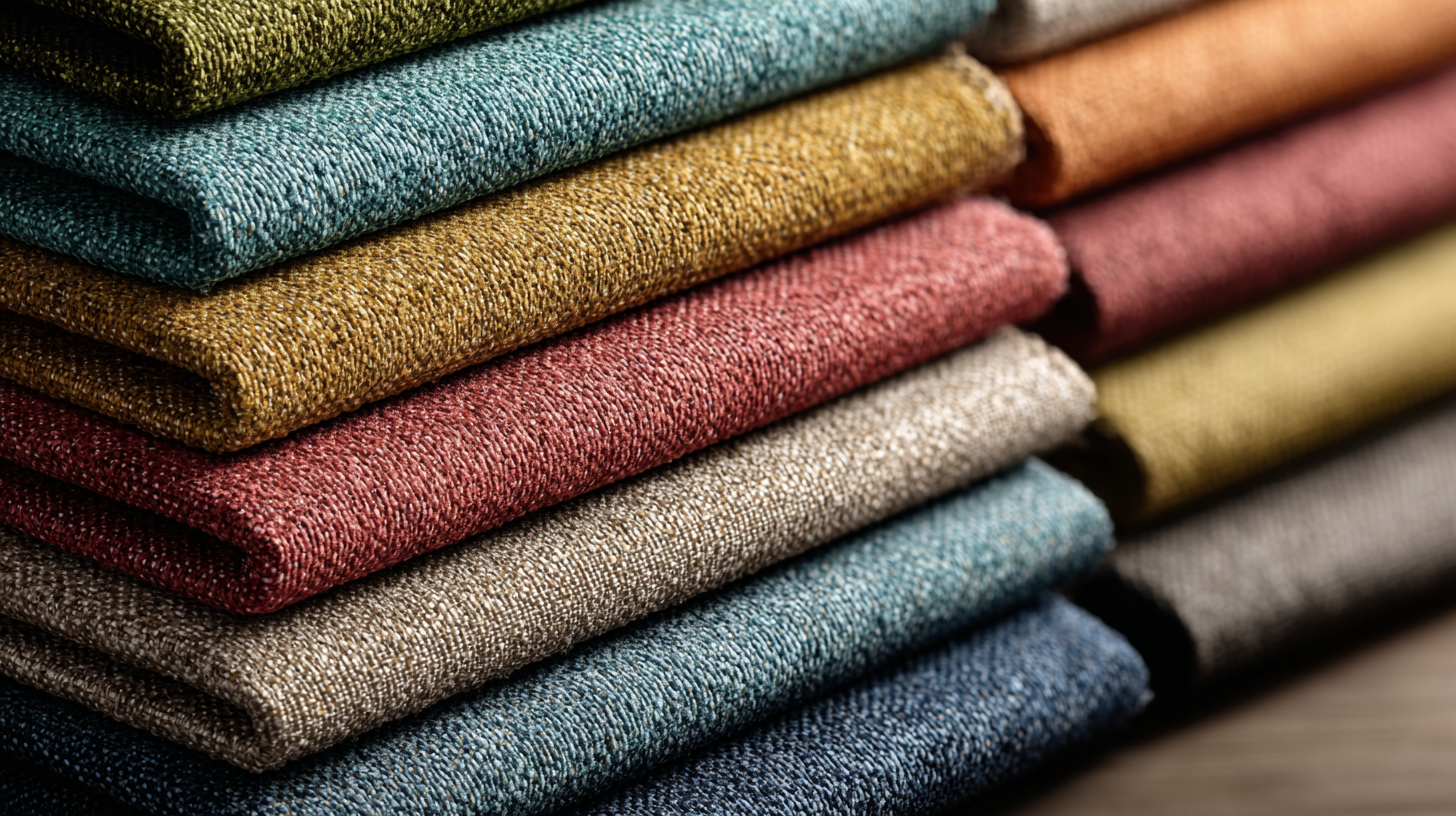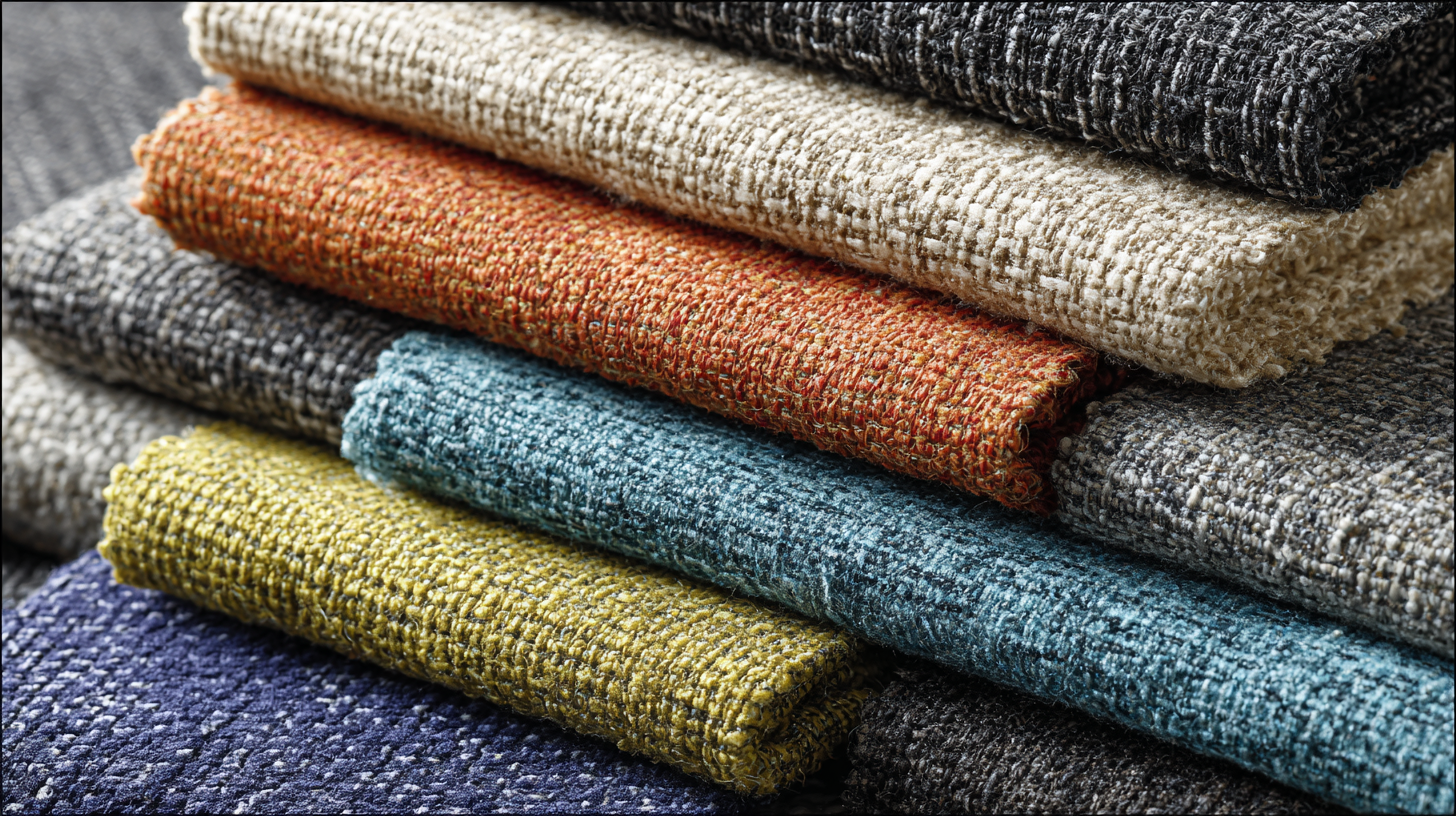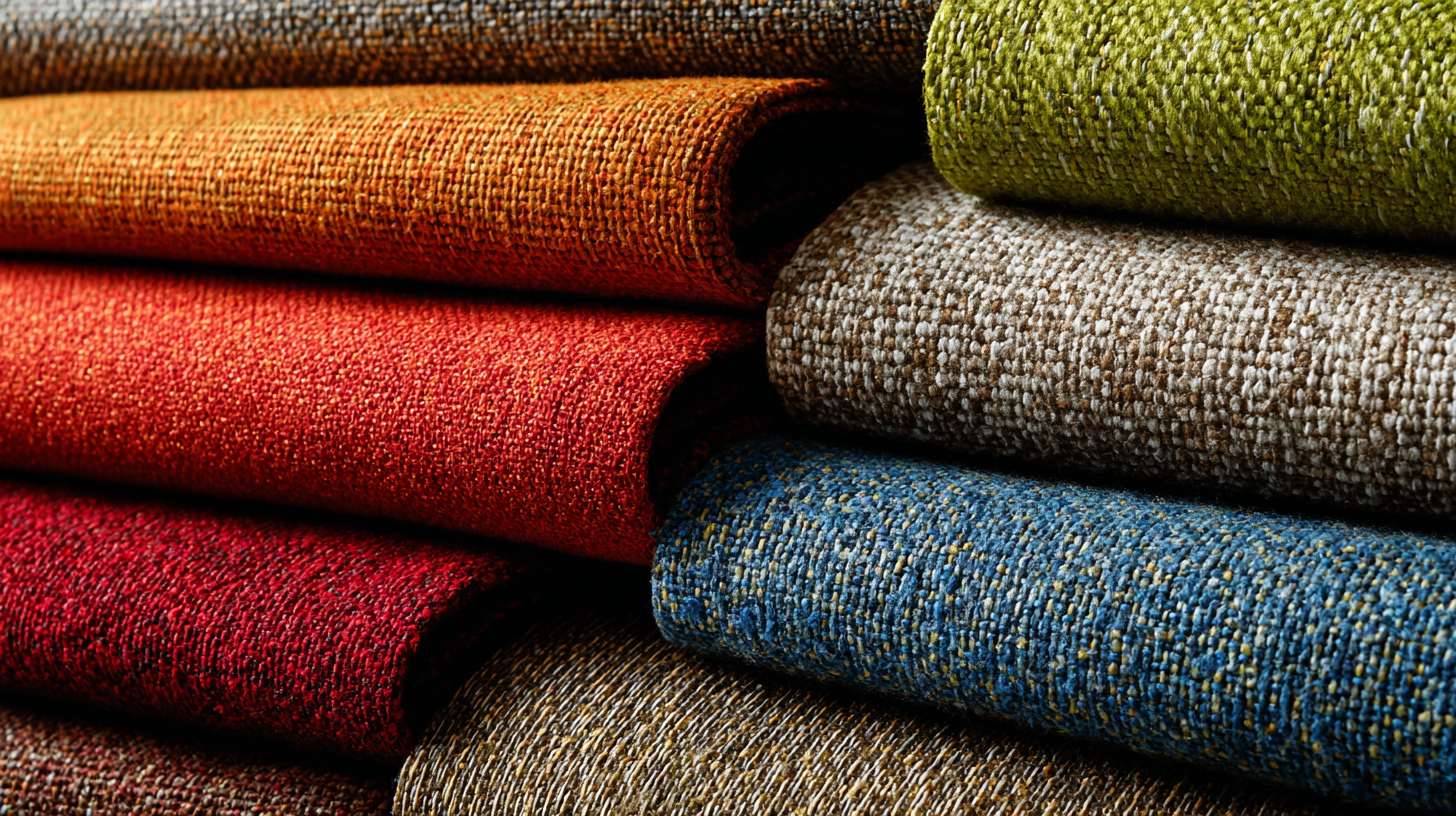 The choice of upholstery fabric plays a crucial role in both the aesthetic and functional aspects of modern interiors. Polyester Upholstery Fabric has emerged as a popular option, not only for its versatility in design but also for its sustainability benefits. According to a report by Technavio, the global demand for polyester fabrics is projected to grow by over 4% annually through 2025, driven by an increasing focus on eco-friendly materials.
The choice of upholstery fabric plays a crucial role in both the aesthetic and functional aspects of modern interiors. Polyester Upholstery Fabric has emerged as a popular option, not only for its versatility in design but also for its sustainability benefits. According to a report by Technavio, the global demand for polyester fabrics is projected to grow by over 4% annually through 2025, driven by an increasing focus on eco-friendly materials.
Additionally, the use of recycled polyester from post-consumer plastics can significantly reduce carbon footprints, with studies showing that it can lower energy consumption by up to 70% compared to virgin polyester production. As consumers become more conscientious about their environmental impact, Polyester Upholstery Fabric stands out as a sustainable choice, offering durability, stain resistance, and a wide array of design possibilities that cater to contemporary lifestyle needs, making it an essential consideration for modern interior designers and homeowners alike.
When selecting the right polyester upholstery fabric for your interior design, it is important to consider several factors that can significantly enhance the aesthetic and functional aspects of your space. Polyester offers a wide variety of textures and colors, making it a versatile choice that can be tailored to fit different design themes, from modern to traditional. Additionally, polyester is known for its durability and resistance to wear, making it ideal for high-traffic areas in homes or commercial spaces. This fabric's easy maintenance and stain resistance further contribute to its popularity among designers.
Moreover, sustainability is becoming a key consideration in modern interior design. Choosing polyester upholstery fabric that is made from recycled materials or produced through environmentally friendly processes can align your design choices with a commitment to sustainability. As consumers increasingly prioritize eco-friendly options, selecting the right polyester fabric can not only enhance your interior but also resonate with a growing desire for responsible consumption. By focusing on the material's lifecycle and its impact on the environment, you can make informed choices that reflect both style and sustainability.
This bar chart illustrates the key benefits of polyester upholstery fabric, rated on a scale from 1 to 10. The chart demonstrates how polyester excels in durability and maintenance while offering good affordability and a variety of design options.
As the demand for sustainable materials increases in the modern design landscape, evaluating the sustainability features of polyester upholstery fabric becomes crucial. Polyester, made from synthetic fibers, offers durability and versatility, making it a popular choice for many interior applications. However, understanding its environmental impact is essential. Sustainable polyester options, such as recycled polyester derived from post-consumer plastic bottles, not only reduce waste but also lower the carbon footprint associated with new material production.
In addition to sourcing, ethical production practices play a fundamental role in determining the overall sustainability of polyester fabrics. Factors such as water usage, energy consumption during manufacturing, and chemical treatments should be analyzed. By prioritizing manufacturers who adhere to sustainable practices, consumers can make informed decisions that support the circular economy. Ultimately, evaluating polyester upholstery fabric through the lens of sustainability not only contributes to eco-friendly interior designs but also encourages a shift towards more responsible consumption patterns in the fashion and textile industries.
| Feature | Description | Sustainability Criteria | Rating (1-5) |
|---|---|---|---|
| Recyclability | Polyester can be recycled and reused to create new fabric. | High | 4 |
| Durability | Resistant to stretching, shrinking, and mildew, making it long-lasting. | Medium | 5 |
| Maintenance | Easy to clean and maintain, requiring minimal resources. | High | 5 |
| Energy Consumption | Production of polyester involves high energy use. | Low | 2 |
| Water Use | Requires less water compared to natural fibers during production. | High | 4 |
Polyester upholstery fabrics have gained popularity not only for their aesthetic appeal but also for their practicality and sustainability. To ensure these fabrics remain in excellent condition, proper care and maintenance are essential. Regular vacuuming is a simple yet effective way to remove dust and dirt from the surface, preventing it from becoming embedded in the fibers. For deeper cleaning, a damp cloth can be used, but it's crucial to test any cleaning solution on a hidden area first to avoid discoloration.
In addition to regular cleaning, protecting polyester upholstery from sunlight can prolong its lifespan. Direct exposure to UV rays can lead to fading over time, so using window treatments or repositioning furniture can help mitigate this risk. For spills, it's important to act quickly—blotting rather than rubbing helps to lift stains without damaging the fabric. Periodically rotating cushions and using fabric protectors can further enhance durability, making polyester upholstery not only a sustainable choice but a smart investment for any modern interior.
When it comes to enhancing modern interiors, polyester upholstery fabric stands out for its versatility in patterns and colors. From vibrant stripes to intricate florals, the wide array of designs available allows homeowners to express their unique style while keeping functionality in mind. Utilizing polyester not only ensures durability but also offers the opportunity to introduce lively elements into your space, making it feel refreshing and inviting.

Tips for Choosing Patterns and Colors:
1. Mix and Match: Don’t shy away from combining different textures and patterns. Pairing striped cushions with solid-colored furniture can create visual interest while maintaining balance.
2. Play with Color: Consider the mood you want to set. Lighter colors can open up space, creating a sense of airiness, while deeper hues can add warmth and intimacy. Experimenting with bold colors can also add a unique touch to otherwise neutral rooms.
3. Layering Textiles: Incorporate various fabric types to add depth. A polyester upholstered chair, complemented with soft throws or patterned pillows, can enhance comfort and aesthetic appeal.
By thoughtfully selecting polyester fabrics that resonate with your design preferences, you can effortlessly transform your interior into a stylish haven.
When considering eco-friendly living, the choice of upholstery fabric plays a vital role. Polyester upholstery fabric emerges as a sustainable alternative in comparison to other materials like cotton or leather. One of the significant benefits of polyester is its durability and resistance to wear and tear, making it a practical choice for households and commercial spaces alike. While natural fabrics like cotton may seem appealing due to their biodegradable properties, they often require intensive agricultural processes and water usage, which can negate their environmental benefits. In contrast, polyester is often made from recycled materials, further reducing its ecological footprint.

Additionally, when comparing polyester upholstery with other fabrics, it’s essential to consider maintenance and longevity. Polyester fabrics are typically stain-resistant and easy to clean, which means less frequent washing and minimal use of harmful detergents. This characteristic not only contributes to their sustainability but also makes them user-friendly in busy homes or offices. When evaluating eco-friendly options, weighing these factors against the environmental impact of fabric production allows consumers to make informed choices that align with their commitment to sustainable living.






